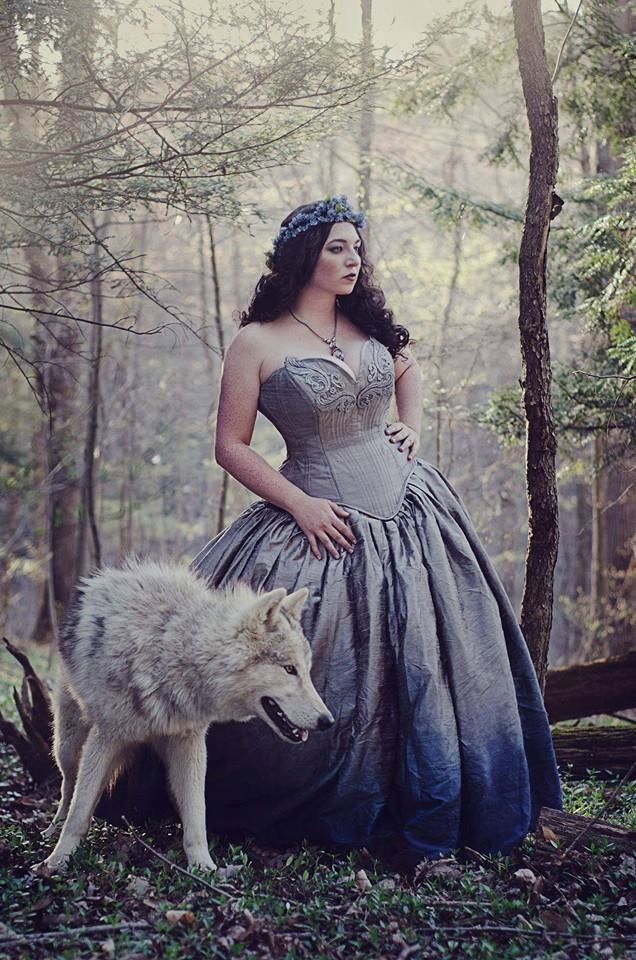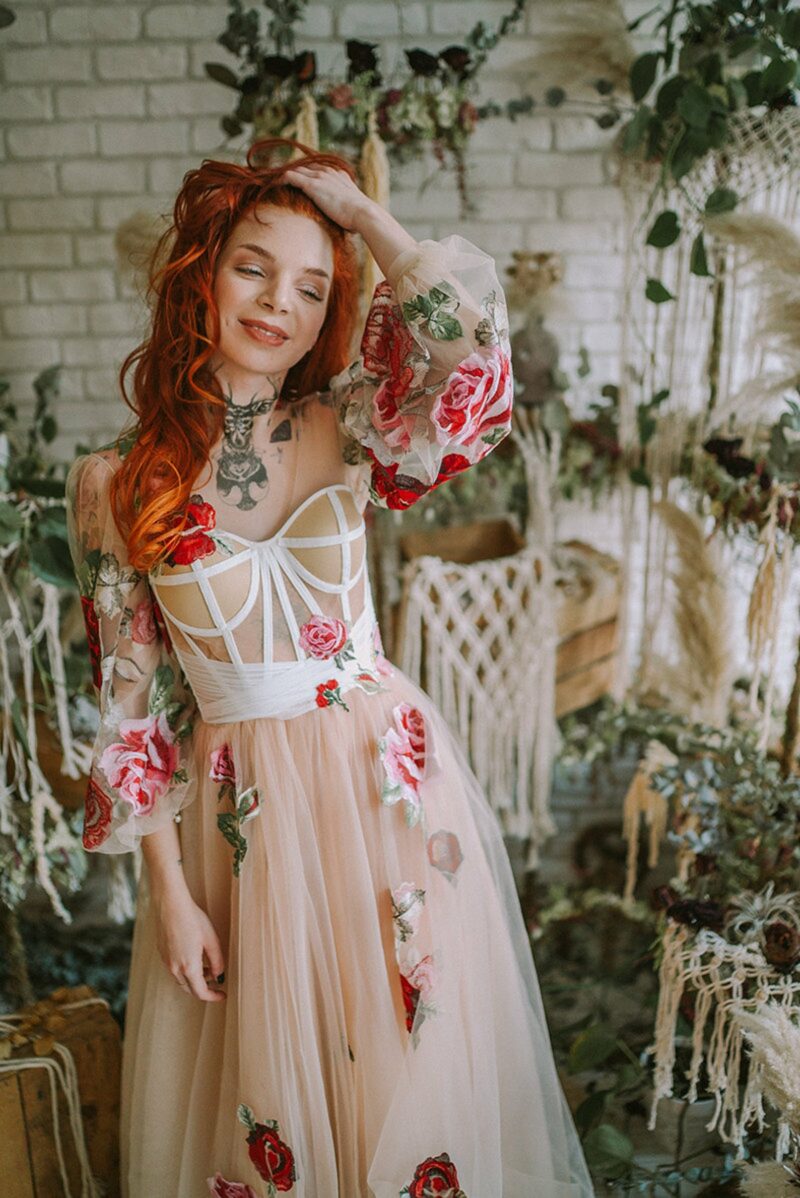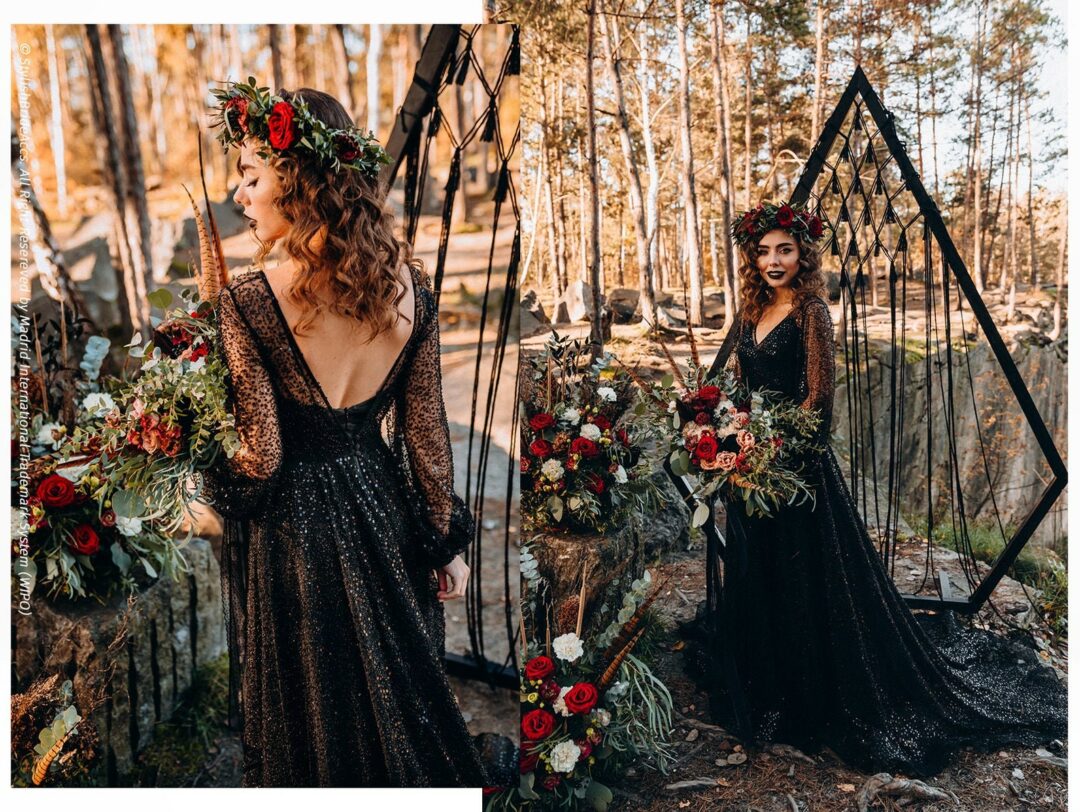
Unless you are one of those lucky ladies who never, ever has trouble finding items that fit you perfectly straight off the rack, there's a good chance your bridal attire will require alterations.
If you are having something custom-made, you will probably need to have at least two fittings. (In my experience, three fittings for a mass-produced wedding dress is common.)
If at all possible, start with a dress (or outfit) that is your size — or very, very close to it. While it is often possible to size a dress up or down, don't count on being able to take in or let out a dress by more than one or two sizes. Many dresses do not contain enough seam allowance to let out that much -– and with fabrics like velvet and satin, the original seam lines will show. (With satin, original seam lines can resemble track marks, hardly an appropriate look for a special occasion.)
If you have not yet purchased your attire, PLEASE resist the urge to buy something that is on sale but several sizes too big. Garments that are much too large for the intended wearer often need to basically be taken apart and re-cut in order to hang properly on the body. This is such a labor-intensive process it can quickly eat whatever money you saved –- and then some.

Wedding dress alterations and appointments
If you are not the same size all over, keep in mind that it is usually easier to take in a garment than it is to let it out. I myself am top-heavy, so I speak from experience on this. It's almost always easiest (and least costly) to buy the size that best fits the largest part of your body and take in the dress wherever it is too big.
Buyer beware: some bridal shops deliberately order the wrong size. If you are ordering a dress through a bridal shop, check them out thoroughly, and make sure they have your correct measurements. Try to order well in advance so that if they order the wrong size anyway, you have time to either come up with another dress or politely, but firmly, insist that they order the correct size pronto.
If buying online (i.e. buying a vintage dress on eBay), ask for specific measurements. If they are not part of the listing (not all labels are sized the same way), and make sure you know how they compare to yours.
When choosing a tailor, go with a reputable one, not the one that quotes you the lowest rate. You get what you pay for. Believe me, it isn't worth having something done cheaply if you subsequently have to pay someone else to fix the cheap-o job.
Many alteration shops will not give estimates for wedding dresses or other formal gowns over the phone. The shop needs to see the actual dress and see how it currently fits your body to determine EXACTLY what needs to be done and give an accurate estimate. Describing the dress over the phone is really not very helpful, especially since some less-scrupulous brides lie about how much work needs to be done on the dress in order to get a lower quote.

Ask whether an appointment is required. Many independent alterations shops require appointments for bridal fittings to avoid getting fifteen brides in one afternoon. It takes time to fit a bridal gown properly, and you do NOT want the person fitting you to be rushed, fumbling, and sweating profusely while a dozen less-polite brides badger and harass her for not fitting you faster.
Do not demand an appointment on a day when appointments are not available.
My former employer had a very rigid no-bridal-fittings-on-Saturdays rule because on each and every Saturday we were so swamped that we frequently didn't get lunch breaks until 4pm.
If you are a klutz and will be wearing a long dress, consider having it hemmed to hang 1″ from the floor rather than touching the ground. Heavy dress + high heels + possible anxiety = heightened possibility of tripping over one's hem. (I am hopelessly clumsy, and will be designing a ballerina-length dress to a. deter tripping and b. show off my shoes, which will be fabulous.)
If you know of any upcoming changes to your physical dimensions (i.e. newly pregnant, having breast reduction surgery, etc.), tell whomever is making or altering your dress ASAP. Once the fabric is cut, the dress generally can't be made drastically bigger without adding panels or gussets. Similarly, if your E cups are about to become C cups, it's best to wait and have the top fitted after surgery.
Wedding dress fittings
When the fitter is in a rush, it shows in her work. Yes, dashing off to a fitting during your lunch hour or after work may not be the most convenient thing in the world, but you DO want that dress to fit you properly, don't you? Suck it up and book that Wednesday evening appointment.
Don't schedule a fitting right after a workout. Having a wedding dress cleaned isn't cheap, so you don't want to have sweat stains removed BEFORE you actually wear it. Also, fitting someone requires being in close physical proximity. No one likes fitting a client who smells like a locker room, so hit the showers first. (As long as I'm on the subject of odor, please go easy on the cigarettes, perfume, and smelly food.)
Buy your foundation garments before your first fitting, and bring them to ALL of your fittings. Yes, this is completely and absolutely necessary. Even if they don't appear to shape your body much or at all, your foundation garments WILL affect the way the dress hangs on your figure. Every so often, we'd have a bride go through one or two fittings with a certain bra or corset, then bring a different one and wonder why the dress looked so different. Depending upon the design and cut of the dress, wearing the wrong bra can even affect whether the hem hangs evenly –- I've seen it happen. (It goes without saying that if you have a petticoat or crinoline, you should bring that, too.)
Ditto for your shoes. If you have not obtained the perfect shoes before your first fitting, mention this to the fitter and then bring a pair of shoes with a heel height in the range of your ideal shoe (heel height can affect your posture), and ask to have the hem marked at a later fitting. Don't even THINK of standing on tiptoe and insisting your hem be marked that way -– standing on tiptoe for the 5+ minutes required to carefully pin a hem will make you wobble and the hem will not be even.
If the tailor balks at your request for drastic changes to an existing dress, look for someone else who can handle the job. Even some of the best tailors are not well-versed in radically altering clothes (i.e. turning Aunt Susie's long-sleeved 1950s number into a halter dress). Your wedding attire should not be someone else's learning experience, particularly if the garment has sentimental value.
If the tailor recommends against making a particular change, there's probably a good reason why. I personally feel it is fine to ask why s/he is recommending against something, or to get a second opinion from another tailor, but please keep in mind these people are professionals -– they are intimately familiar with garment construction, and may know of a better way to make something look the way you want it to look.
During the actual fitting, please don't move unless the person fitting you indicates it is all right to do so. Moving during a fitting can cause the garment to be fitted unevenly (this is especially true of hems and sleeves) or cause you to be accidentally poked with a pin. (I used to come home with bumps and bruises because some of the less-attentive clients would move during a fitting and bonk me in the face, chest, shoulders, etc.) Not sure when it's okay to move? Just ask. Believe me, it's appreciated.
Do move around to test the fit once you are given the all-clear. Will you be doing a lot of dancing, walking, sitting, etc.? Make sure you can comfortably do all of those things once the dress is pinned. If the dress will inhibit your movement, point it out so the fit can be adjusted accordingly.
Your final dress fitting should be held approximately two weeks prior to the wedding, if possible. Any closer to the big day and there might not be enough time to fix any problems — any further from the big day and there's a chance the dress might not fit. Many brides lose weight from stress, or get swamped with last-minute things and simply forget to eat. (98% of all the brides we worked with lost several pounds during the 4-6 weeks before the wedding, regardless of whether they were trying to do so. No matter how proud you are of your figure, it could happen to you too.)
If your mom/maid of honor/best friend couldn't come dress shopping with you, it's okay to ask the fitter to show her/him how to zip/button/lace up your dress. Assuming you can't get it on without help, that is. Zippers are a no-brainer, but corset-back lacing in particular can be intimidating to those who have never had to handle it.
Good luck!
Offbeat Wed Vendor
This page features vendors from our curated Offbeat Wed Vendor Directory. They're awesome and we love them. If you're a vendor let's get you in here!








